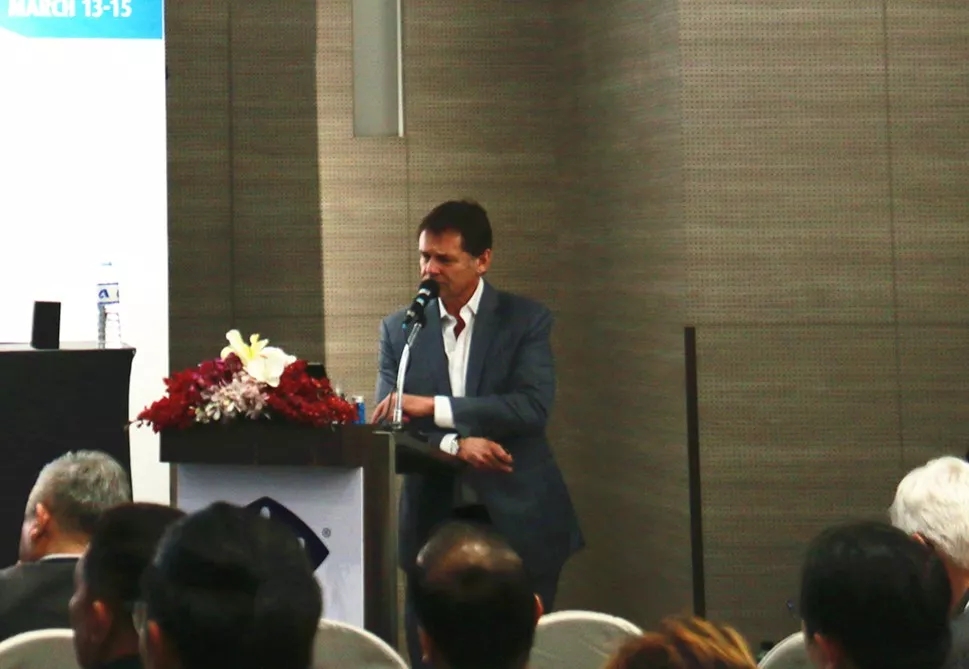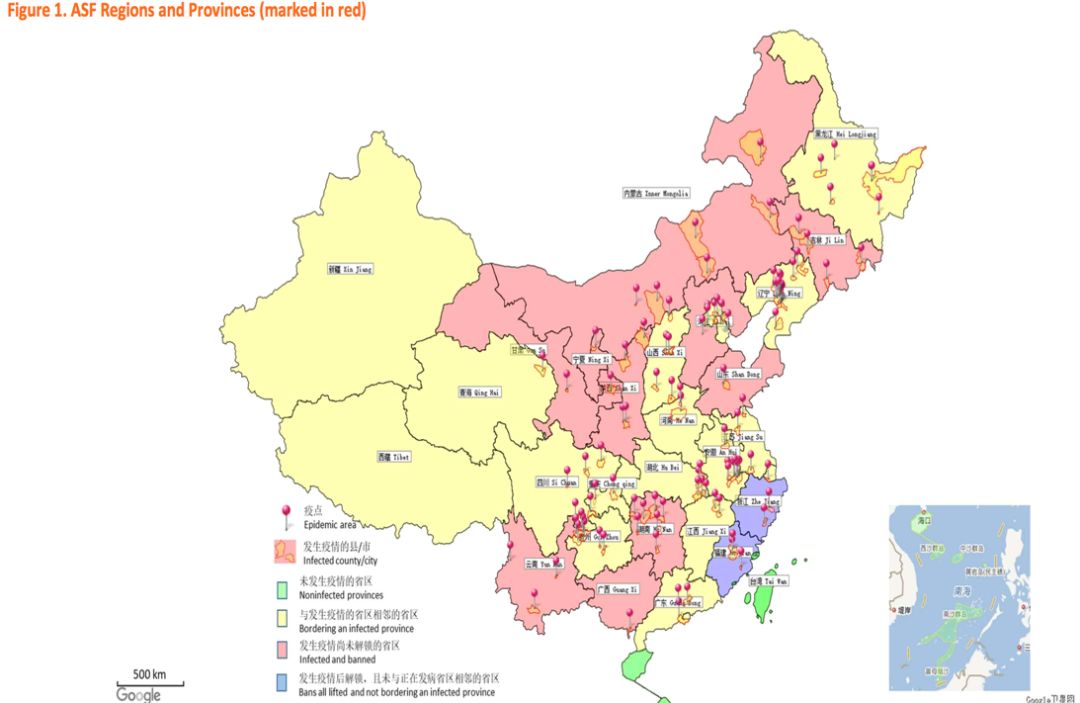
On March 14, 2019, International Pig Forum China debuted its first overseas sub-forum which launched on the same day as VIV ASIA 2019 and brought together more than 100 participants of world industrial entrepreneurs, scholars and researchers.

Li Dingding, publisher of Pig Statistics & Trends and General Manager of LyJa Media
Boddington & Mcorist remarks: “China should cooperate with south-east Asia in the battle against ASFv.”

Michael Boddington, the founder of Asia Agribusiness Consulting Company
ASFv has been active around the world since last year. Apart from the focus on the united effort in controlling ASFv, foreign trade and meat consumption also rise to people’s attention. On the forum, the founder of Asia Agribusiness Consulting Company Michael Boddington gave his thematic report “the Development Trend of Global Pig Industry and the Challenge Looming”, in which he expressed that the amount of farming and production of China Pig is far above that of the total of main south east Asian countries. Presently, the outbreak of ASFv in China and Vietnam is forcing its passive impact on Thailand, Philippines and many other south-east Asian countries.
Boddington and Mcorist both held that within 3 to 5 years, the challenge and risk of ASFv will have a continuous impact on China and South-east Asia market. Because of the unique geoenvironment, huge population turnover and frequent trading, the responsibility of battling against ASFv does not rely on one region or one country alone. China and all the south-east countries should work together to meet the challenge.
Ma Chuang commented that the outbreak of ASFv will change China meat industry pattern with the consumption of poultry meat growing the fastest.

Ma Chuang, Deputy Secretary-general of Chinese Association of Animal Science and Veterinary Medicine (CAAV)
“In 2018, the price of China pig and pork dropped in different percentage, with the price of live pig dropped by 16.4%, suckling pig by 30.8%, sow by 23.8%, pork by 17.1% and the profit of pork slaughtering dropped by 42.3%.“ Ma Chuang in his report “The Impact of ASFv on China Pig Industry and Consumption Market” pointed out: “Accompany with the decrease of pork price and slaughtering profits, the price of the replacing products beef, mutton, poultry meat and poultry egg has increased in different degree: the price of beef and mutton increased by 3.8 % and 11.4 % respectively; the price of whiter broiler meat increased by 16.4%; retailing price of egg increased by 23.6%; eliminated layers by 8.9%; and duck by 9.0%.”
Ma Chuang furthermore points out causes of the phenomenon:
1. Too much of pork supply. In 2018, the total supply of pork amounted to 58.60 millions, increased by 2.1% comparing with the 53.38 million total supply of year 2017;
2. A decreased pig number out of the outbreak of ASFv. By the end of January of 2019, there was 111 cases of ASFv as reported and 1 million infected pig being slaughtered. The quantity of live pig and sow has dropped by 12.6% and 14.8% respectively.
3. Pig consumption grew faster than pig supply. In 2018, China per capita pork consumption was 42 kilogram, increased by 1.7% contrasted with 41.3 kilogram in 2017, which is 0.4% faster than the total supply of pork.
A glimpse of China pork demand and supply:

“To China pig industry, what on earth will ASF bring? A crisis or an opportunity?” Ma Chuang analyzed that “in 2019, impacted by ASF, the pork consumption will decrease by 10% and the total supply of China pork will decrease 4.5 million ton; while the supply of poultry meat will increase 1 million to 1.5 million ton. In total estimation, the total meat supply in Chinese market will decrease 3 million to 3.5 million ton.”
According to Ma Chuang, the drop of pork supply leads to the increase of pork price. And the profit of pig farm will accordingly increase. Impacted by ASF, China pork consumption was stagnated after certain increase, which will bring a change towards China meat supply construction and meat market pattern: though pork supply still remains as the leading role in China meat market, while beef and mutton is largely consumed by people with high salary, poultry meat will become an important protein supply to balance China meat supply market. It is estimated that in 2019, the production of China white and yellow broiler will increase and the increase rate of poultry meat will far outrun that of other meat.
Ma Chuang then concluded that ASF will obsolete small farms. The whole industry including slaughtering farm will welcome its integration after the retracing of ASF. Right on the period of China animal protein industry transformation, the key factor relies on the technical innovation and the change of business mode. It’s still a tough task to deal with ASF.
Johnson proposed: the adoption of intelligentization and technical innovation will add value to pork industry

Wayne Johnson, Senior Technical Consultant at Enable Agriculture Technology Consulting Co.,LTD.
The outbreak of ASF will continue its influence on many links of pig industry; and the direction has turn to the improvement of pork industry value chain. For those large pig farm and slaughtering farm, the application of digital technology and the upgrading of intelligentization will become more popular. Wayne Johnson in his report “The Application of Intelligent Technology and Innovation Technology in Meat Product Processing Chain” pointed out, “automated image extraction technology can replace repetitive manual work without any emotion undulation, and also can detect something beyond workers’ reach, such as having a real-time infrared monitoring of pig farm temperature and humility, of pig body temperature and of pig movement.”
Johnson observed that through the application of intelligent feeding system, the consumption of feed and water will be detected out, the information of which will contribute a conclusion about physiological indices. Moreover, the intelligent and innovation technology will assist man to make decision of what to feed pig, when to feed pig, when to involve manual work, and when to sell the grown-up pig, etc. He further commented: “the ratio of intelligentization and innovative technology will become larger and larger and will gradually replace manual works in the future farming and meat processing.”